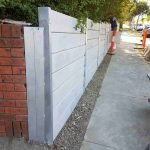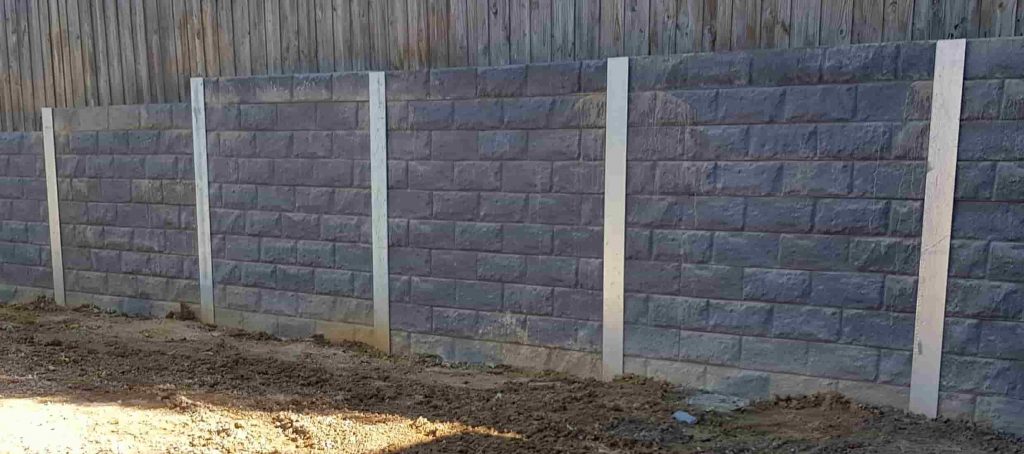Introduction
Building a retaining wall isn't almost stacking stones or putting concrete; it's a complex procedure steeped in science and engineering. Retaining walls are crucial structures that hold back soil, preventing disintegration and allowing for the production of usable arrive on slopes. Whether you're aiming to install a garden feature, create more space for landscaping, or avoid soil motion in locations susceptible to shifts, comprehending the intricacies behind strong and long lasting retaining walls is necessary. This post will delve into different elements of keeping walls, using insights from expert contractors who focus on this field.
The Science Behind Strong and Resilient Retaining Walls by Expert Contractors
When we discuss the science behind maintaining walls, we're diving deep into materials, style principles, and structural stability. Retaining walls can be made from numerous materials such as concrete sleepers, wood sleepers, stone, and even H beams. Each material uses special advantages and difficulties that require to be comprehended for optimum performance.
Understanding Soil Mechanics
Soil mechanics is the foundation of any maintaining wall building. The wall needs to hold up against the lateral pressure put in by the soil it holds back. This pressure varies based upon numerous elements:
- Soil type: Clay, sand, silt-- all these types act differently under stress. Moisture content: Water increases soil weight and can trigger instability. Height of the wall: Taller walls need more robust support mechanisms.
The Role of Drain in Keeping Walls
One key aspect typically overlooked is drainage. Water accumulation behind a wall can result in increased pressure that might jeopardize its stability.
Weep holes: These permit water to escape. Drainage pipes: Installed at the base to channel water away. Gravel backfill: Promotes drainage while supplying stability.Types of Retaining Walls
Understanding different types of retaining walls is vital for choosing the right one for your project.
Gravity Walls
Gravity walls count on their own weight to withstand soil pressure. They are normally made from heavy materials like stone or concrete.

Pros & Cons
- Pros: Basic design; no special structure needed. Cons: Limited height; needs considerable area at the base.
Cantilevered Walls
These walls utilize leverage to keep back soil, including a horizontal piece that extends into the maintained soil.
Pros & Cons
- Pros: More reliable than gravity walls for taller heights; less material needed. Cons: Needs careful engineering and design calculations.
Sheet Stack Walls
Often used in soft soils where other types might fail, sheet stack walls consist of interlocking slabs driven into the ground.
Pros & Cons
- Pros: Reliable in tight spaces; minimal footprint. Cons: Less stable under high loads; can be expensive.
Choosing Materials for Keeping Walls
The choice of materials considerably impacts a wall's resilience and effectiveness.
Concrete Sleepers vs Timber Sleepers
Concrete sleepers are preferred for their strength and durability compared to timber sleepers which are more visually pleasing but may have a shorter life-span due to rot or insect damage.
Comparison Table
|Material|Durability|Expense|Aesthetic Appeal|Upkeep|| -------------------|------------|----------|-------------------|--------------|| Concrete Sleepers|High|Medium|Low|Low|| Lumber Sleepers|Medium|Low|High|High|
Stone as a Product Choice
Stone is another traditional choice known for its durability but comes with higher expenses associated with labor-intensive setup processes.

Design Considerations by Specialist Contractors
Expert professionals know that design plays a vital function in ensuring that retaining walls operate efficiently over time.
Height Restrictions
Local building codes typically impose restrictions on how high a retaining wall can be developed without needing additional engineering certification.
Bending Moments and Shear Forces
Contractors determine bending moments (the tendency of an object to flex) and shear forces (the force acting parallel to an item) when designing retaining walls.
Installation Process Overview
The setup process needs precise preparation and execution:
Site assessment Design finalization Material selection Excavation Foundation preparation Wall assemblyCommon Setup Mistakes
It's simple to make errors throughout setup-- here are some typical ones:
- Not accounting for drainage Skipping proper compaction of backfill Insufficient reinforcement
FAQ Section
What Are Retaining Wall Installers?
Retaining wall installers are specialized contractors who focus exclusively on building these structures with expertise in various products like concrete sleepers or timber sleepers.
How Long Do Maintaining Walls Last?
With correct installation and upkeep, the majority of keeping walls can last anywhere from 20 to 100 years depending upon products used.
Can I Construct My Own Keeping Wall?
While DIY tasks can be satisfying, it's recommended to talk to a professional specialist if you're unskilled with structural work; inappropriate installation can result in pricey failures down the line.
What Is Backfill?
Backfill describes the product used to fill in behind a keeping wall after building and construction; it generally consists of gravel or crushed stone for ideal drainage.
How Much Does It Cost To Construct A Maintaining Wall?
Costs vary extensively based on size, product choice (like concrete versus wood sleeper), labor rates, and location however typically range from $15-$50 http://israelfencing-contractorsrlxw223.timeforchangecounselling.com/step-by-step-guide-what-to-expect-when-dealing-with-a-retaining-wall-contractor per square foot installed.
Are There Permits Required For Building A Maintaining Wall?
Yes! Most towns require permits before building any considerable structure like a keeping wall due to safety guidelines-- constantly examine local laws first!
Conclusion
Building strong and durable retaining walls includes a lot more than simply stacking products together-- it's a detailed blend of science, engineering concepts, product choice, style considerations, ecological elements like moisture levels or soil types being taken into consideration every step along the way! Whether you choose concrete sleepers due to their effectiveness or opt for rustic charm with wood sleepers-- collaborate with experienced specialists makes sure success through thorough planning integrated with market knowledge tailored specifically towards your needs! The science behind strong and durable retaining walls by specialist professionals will not just protect your residential or commercial property however likewise boost its visual appeal while standing high against time itself!